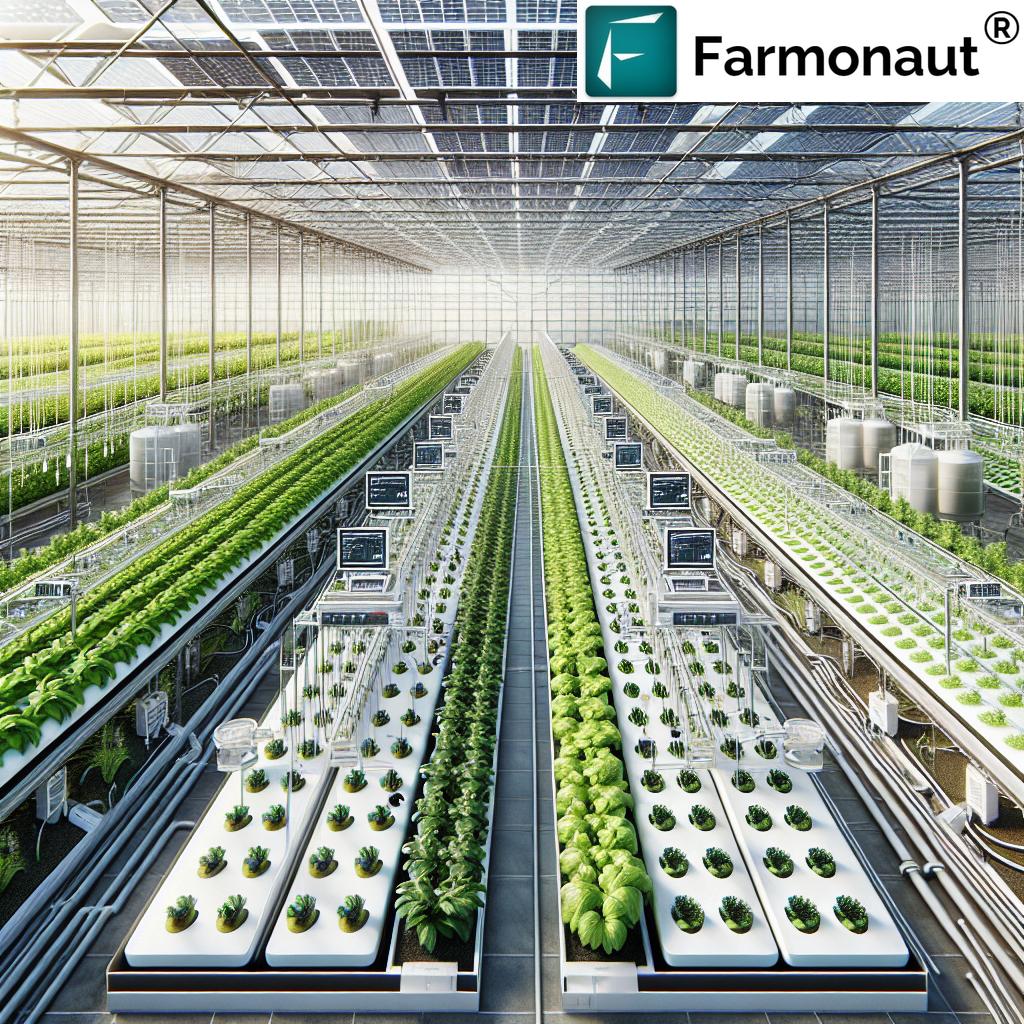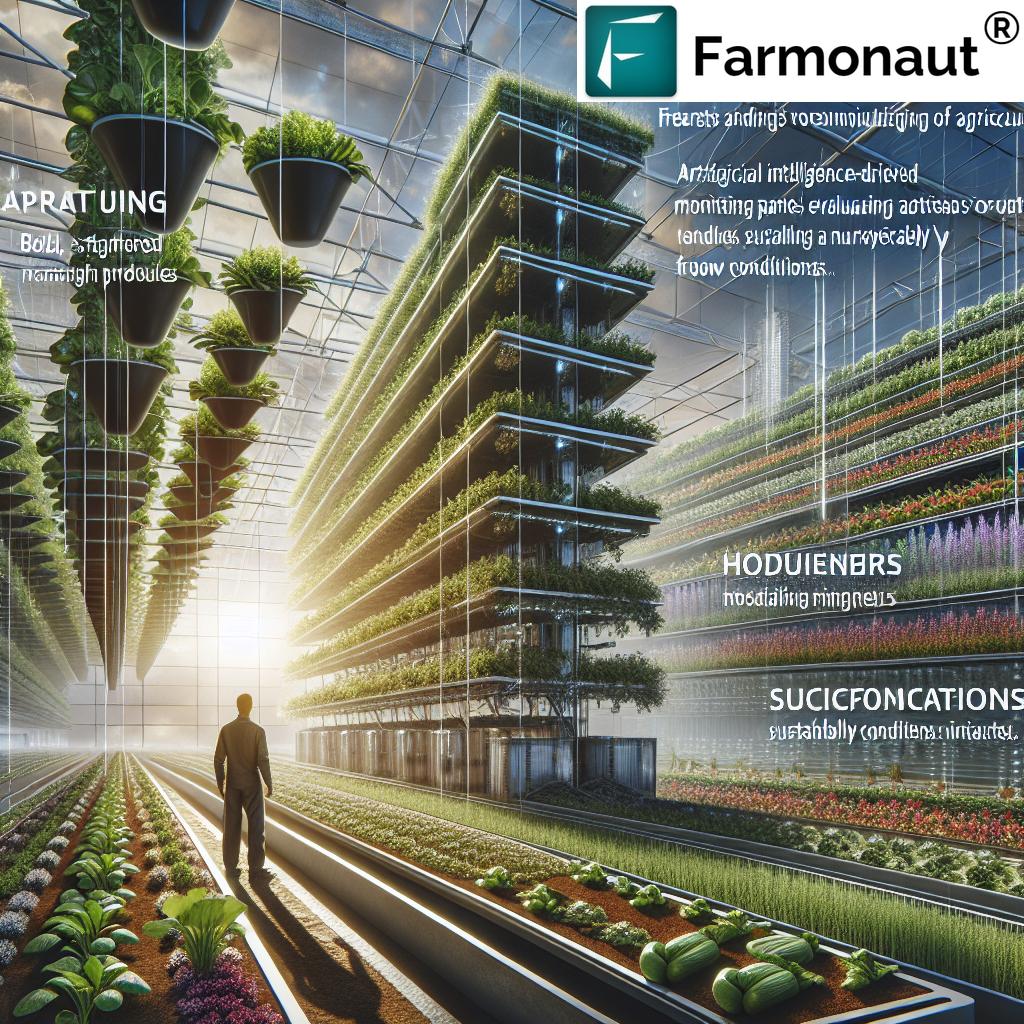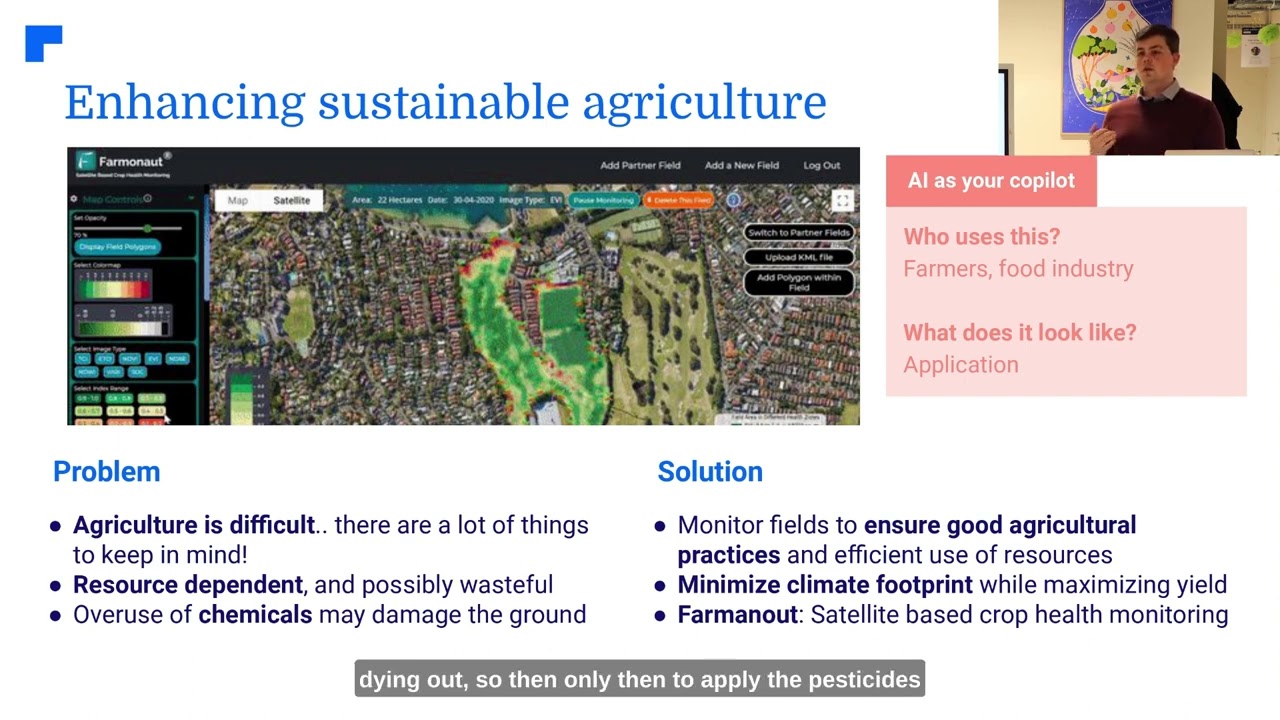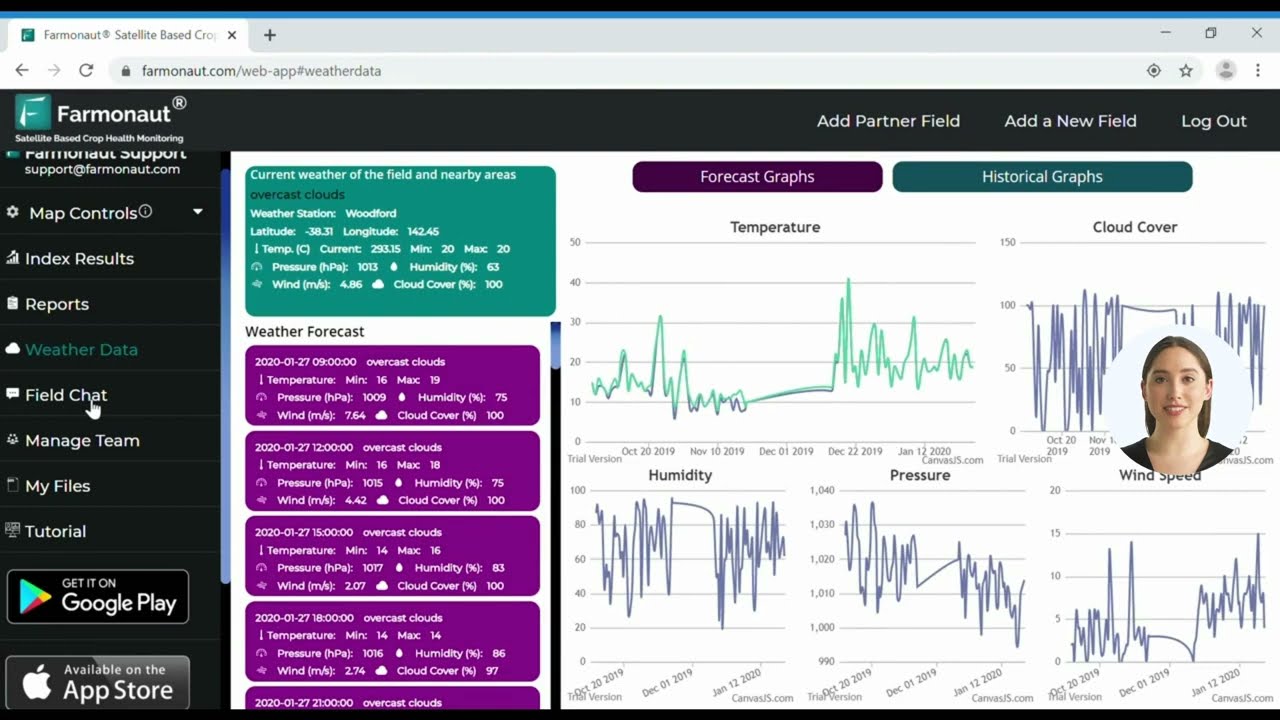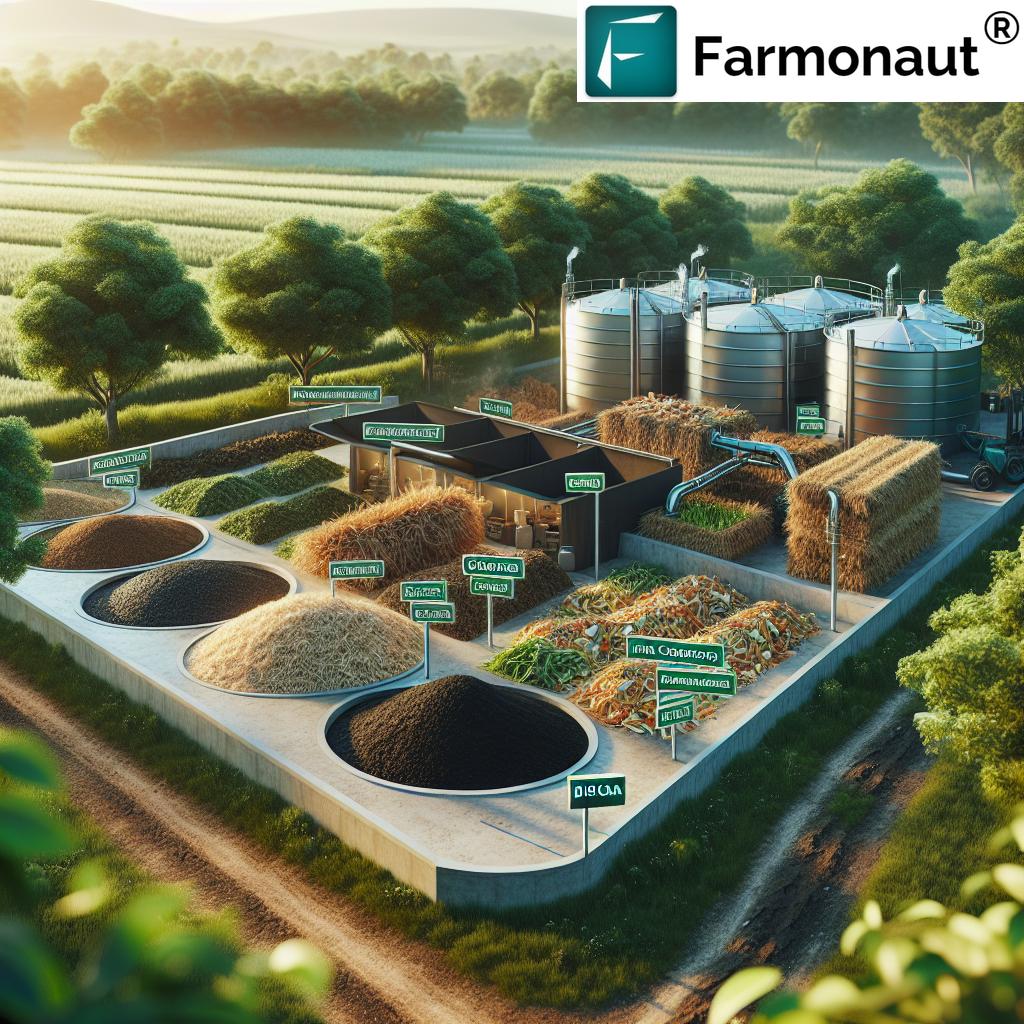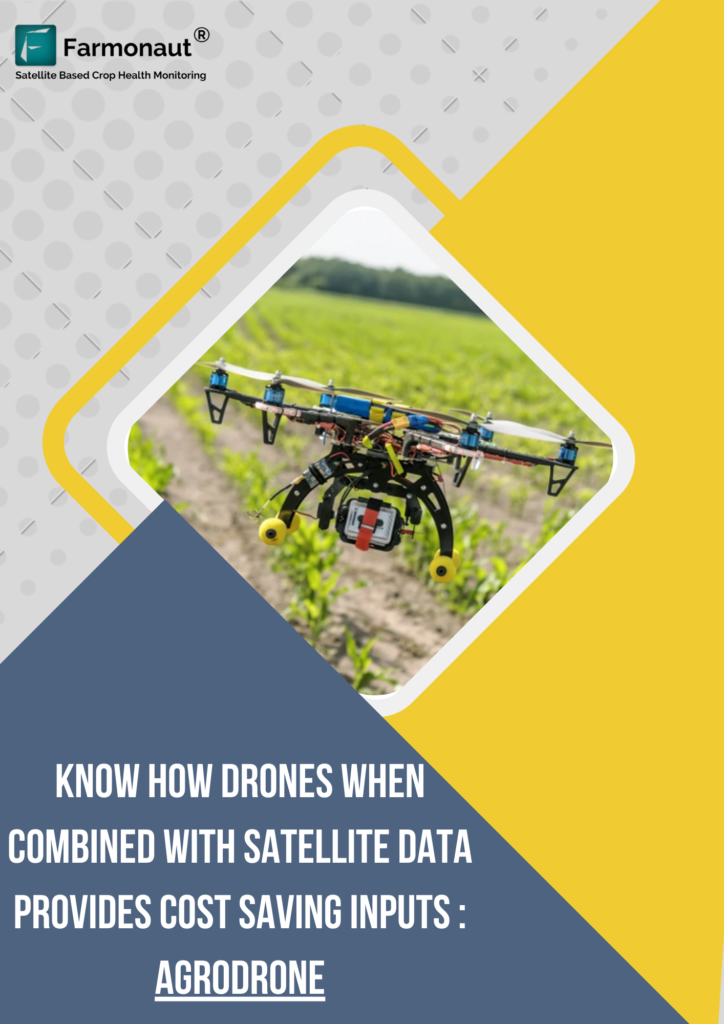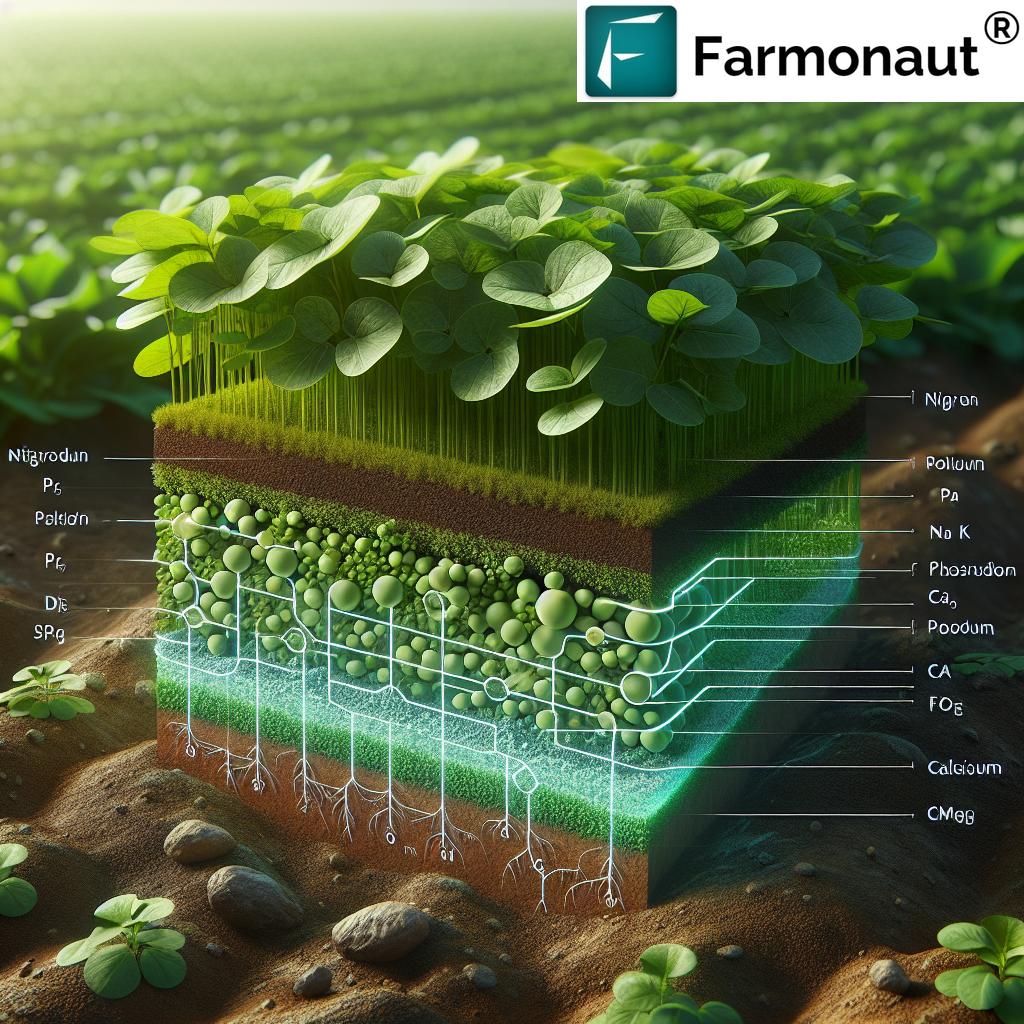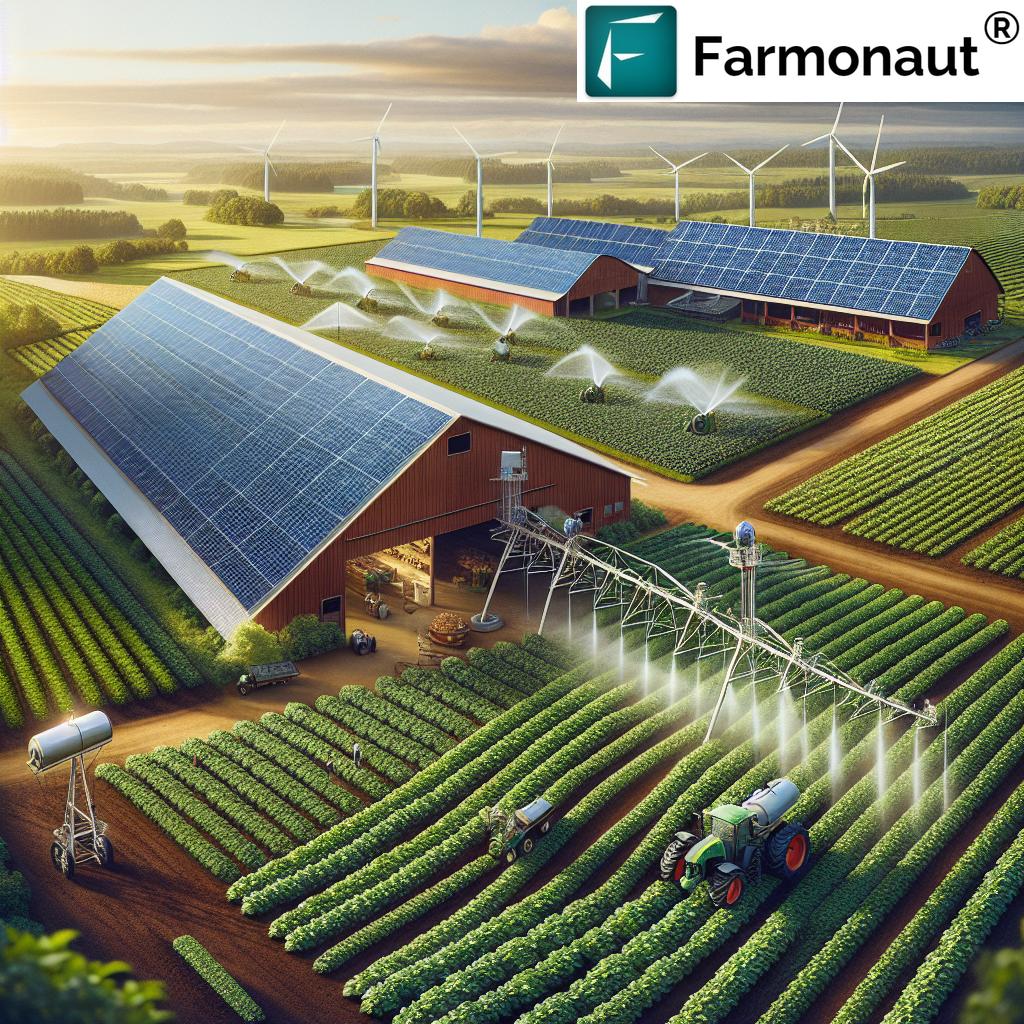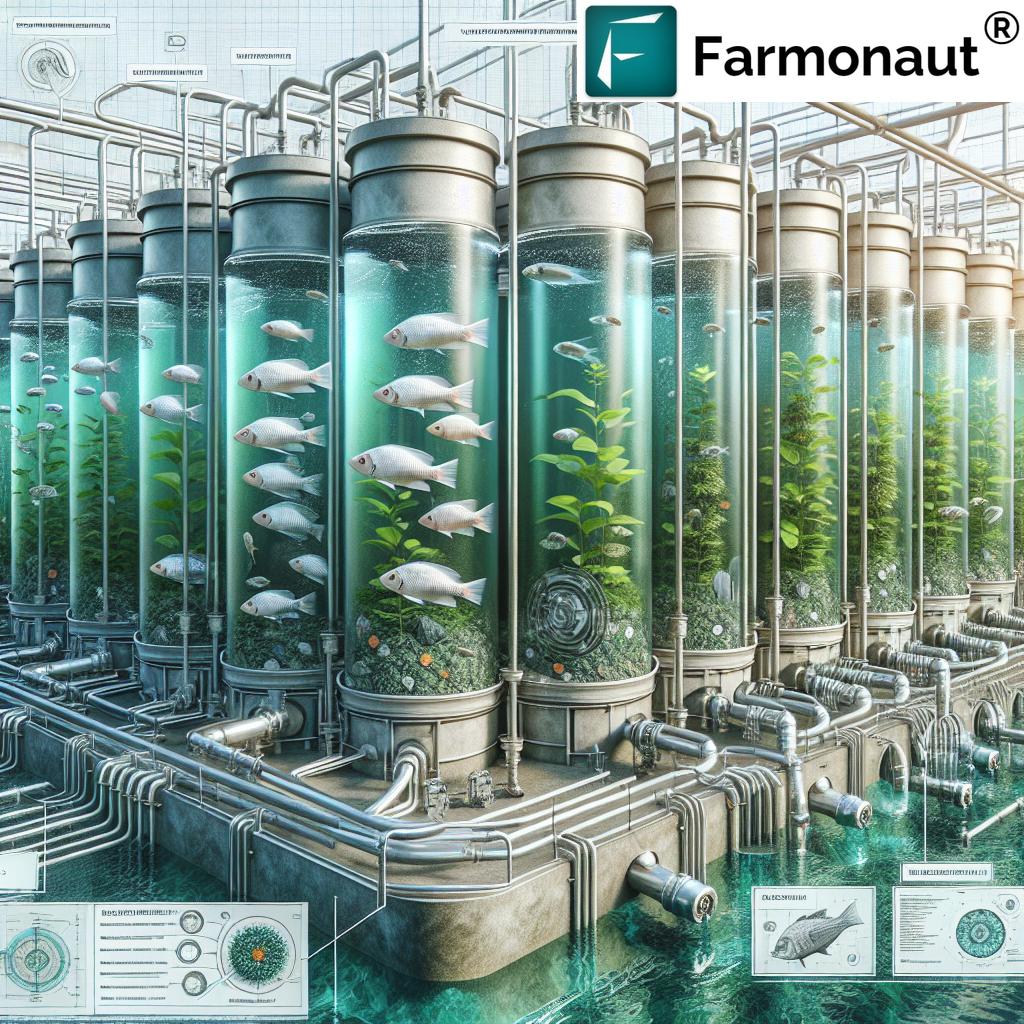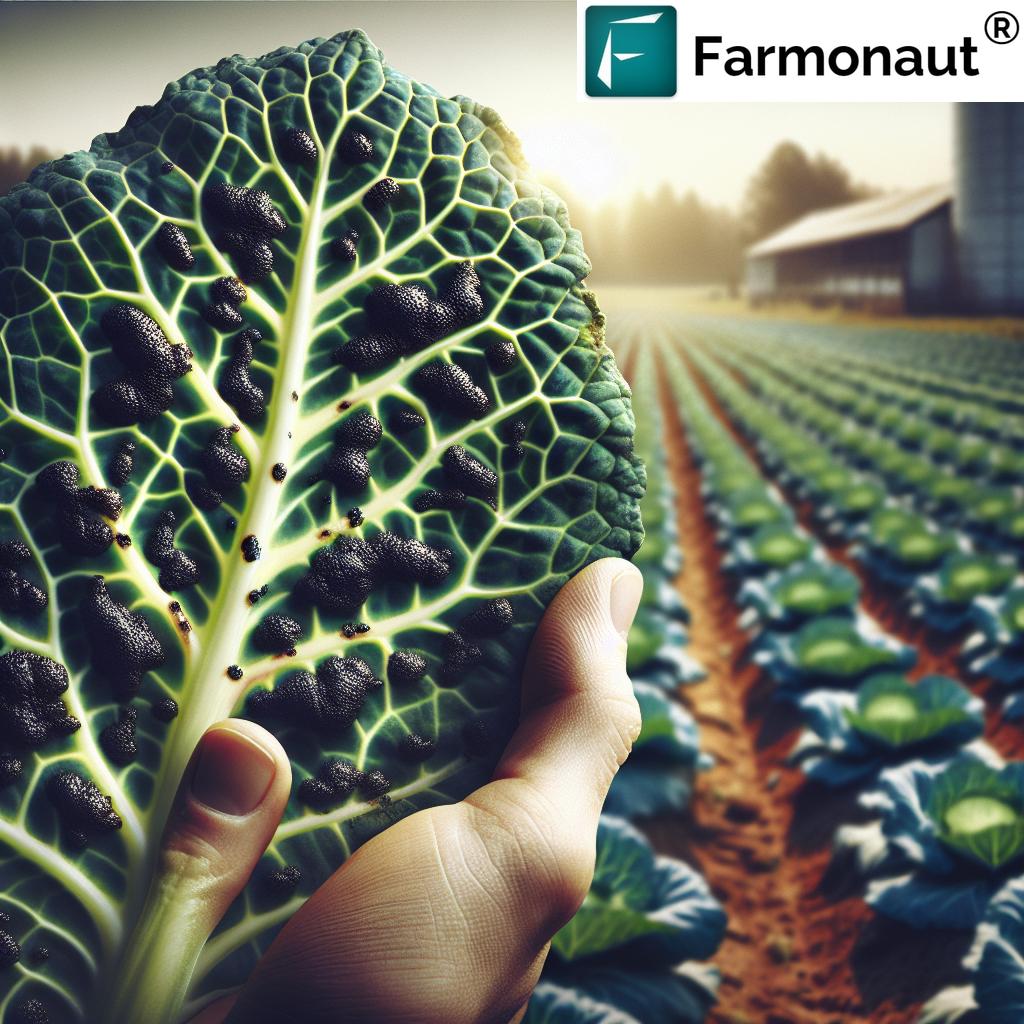Future of Greenhouses: 7 Shocking Innovations Revealed
Table of Contents
- Introduction: The Evolving World of Greenhouse Technology
- Trivia: The Power of AI and Automation in Greenhouse Agriculture
- 7 Shocking Innovations in Greenhouse Technology
- 1. AI-Powered Smart Greenhouse Management
- 2. Automation and Robotics Revolutionizing Tasks
- 3. Renewable Energy and Net-Zero Greenhouse Operations
- 4. Water & Resource Efficiency Through Advanced Systems
- 5. Vertical Farming & Hydroponic Greenhouse Solutions
- 6. Advanced Materials & Innovative Greenhouse Designs
- 7. Data-Driven Insights and Precision Decision Making
- Comparative Table: The Top 7 Innovations in Greenhouse Technology
- Farmonaut’s Role in the Future of Smart Greenhouse Management
- Technological Advancements and Sustainability: The Road Ahead
- FAQ: Future of Greenhouses and Cutting-Edge Technologies
- Conclusion: Embracing the Future of Greenhouses
“AI-powered greenhouses can boost crop yields by up to 30% compared to traditional methods.”
Introduction: The Evolving World of Greenhouse Technology
Greenhouse agriculture has stood the test of time as one of the most valuable innovations for sustainable food production. By providing controlled environments, greenhouses protect crops from adverse weather, extend growing seasons, and optimize plant conditions for maximum yield. In an era marked by rapid climate change and escalating global food demand, we are witnessing a transformation in how greenhouses operate.
Today, future-ready greenhouses combine AI, automation, advanced sustainable greenhouse practices, and revolutionary energy efficient systems to create next-generation solutions. These innovative approaches not only increase productivity but also address the core challenges of resource scarcity, environmental impact, and economic viability. In this comprehensive blog, we’ll reveal 7 shocking innovations shaping the greenhouses of tomorrow—and how technologies like IoT, machine learning, vertical farming in greenhouses, and hydroponic greenhouse solutions are rewriting the future of sustainable agriculture.
“Automated climate control systems reduce greenhouse energy consumption by nearly 40% annually.”
7 Shocking Innovations in Greenhouse Technology
We’re living in an exciting era where the convergence of advanced technologies and innovative greenhouse practices is transforming how we grow, manage, and harvest crops. Here are the seven most impactful greenhouse innovations rewriting the rules of modern agriculture:
1. AI-Powered Smart Greenhouse Management
The implementation of artificial intelligence (AI) in greenhouse technology is nothing short of revolutionary. Through AI in agriculture, we now deploy intelligent systems that monitor, analyze, and optimize every stage of plant growth from planting to harvesting.
AI-powered sensors, IoT devices, and actuators tirelessly track key parameters—including temperature, humidity, soil moisture, and light levels. Machine learning algorithms process this data in real time, triggering automated adjustments for optimal plant growth conditions. The upshot? Dramatically increased yields, fewer resources wasted, and better cost control for growers.
- Precision irrigation delivers water exactly where and when needed, reducing excess consumption.
- Automated environmental controls adjust lighting, ventilation, and temperature for healthy crops year-round.
- Crop health monitoring with AI prevents disease outbreaks and optimizes nutrient delivery.
Why it matters: By adopting intelligent farm management systems, growers can enhance productivity and sustainability, even in challenging environments.
2. Automation and Robotics Revolutionizing Tasks in Greenhouses
Automation is reshaping greenhouse operations worldwide. Gone are the days of labor-intensive, manual processes. Today’s **greenhouse automation** movement uses robots and robotic arms to perform repetitive or complex tasks, greatly reducing human intervention and associated labor costs.
- Seeding and planting: Robots sow seeds in uniform rows for consistent plant density.
- Crop monitoring: Automated systems continuously check for plant health, pests, and nutrient deficiencies, sending alerts as needed.
- Harvesting: AI-powered robots pick crops at peak ripeness, minimizing waste and ensuring produce quality.
Automation ensures not only efficiency, but also precision—resulting in higher yields, lower resource usage, and better adaptability to unpredictable labor environments. The future is bright for those embracing robotics in greenhouse agriculture.
3. Renewable Energy and Net-Zero Greenhouse Operations
Sustainability is now at the core of the best greenhouse designs. Net-zero and energy efficient greenhouses are utilizing renewable energy sources, such as solar panels and wind turbines, reducing reliance on fossil fuels.
- Solar energy: Modern greenhouses are equipped with robust solar panel arrays to power lighting, heating, and automation systems—sometimes producing surplus energy for the grid.
- Wind turbines: Supplementary wind power further cuts carbon emissions.
- Geothermal heating/cooling: Leveraging the earth’s stable below-surface temperatures for temperature control further boosts energy efficiency.
These innovations not only slash operational costs, but also minimize environmental impact, setting the standard for 21st-century agricultural sustainability. If you’re looking for up-to-date guidance to reduce carbon footprints in your greenhouse, Farmonaut’s Carbon Footprinting solution provides detailed, actionable analytics to enable better decision-making and compliance.
4. Water & Resource Efficiency Through Advanced Greenhouse Systems
Scarcity of water is a growing global challenge, especially in arid regions. Advanced greenhouse systems are implementing breakthrough irrigation and resource recirculation solutions.
- Drip irrigation systems: Ultra-efficient, they deliver water straight to root zones, reducing evaporation and runoff.
- Rainwater harvesting: Greenhouses are outfitted with collection and storage systems for on-demand water supply, reducing dependence on municipal or groundwater sources.
- Closed-loop irrigation: Recycling and filtering used water not only conserves but also reduces nutrient loss, leading to healthier crops and lower costs.
These sustainable practices enable year-round crop growth even in regions experiencing extreme climate change. Water conservation now goes hand-in-hand with resource management to maximize yields and future-proof agriculture.
5. Vertical Farming & Hydroponic Greenhouse Solutions
Vertical farming in greenhouses is driving urban agriculture into the future. By cultivating crops in stacked layers rather than horizontal rows, growers radically maximize land use and enable production in areas with limited space—like bustling city centers or rooftop gardens.
- Hydroponic greenhouse solutions: Soilless systems regularly circulate nutrient-rich water throughout the plant roots, allowing for 300% higher yield per square meter and up to 95% water savings.
- Integration of IoT sensors ensures optimal nutrient balances, pH, and moisture levels at all times for scalable crop growth.
- Minimized pest and disease risks, since soil-borne pathogens are largely eliminated.
If you want to bring eco-friendly, space-saving agriculture closer to your city—or even inside your greenhouse—vertical farming and hydroponics are game changers.
6. Advanced Materials & Innovative Greenhouse Designs
Tomorrow’s greenhouse structures are powered by world-class materials research and engineering breakthroughs.
- Self-cooling glass: These panels reflect excess heat while still maximizing natural light, slashing cooling costs in hot climates.
- Biodegradable greenhouse plastics: Reducing plastic waste while maintaining insulation and durability.
- Aerogel-insulated panels: Deliver next-level energy efficiency by providing superior insulation with minimal weight.
- Retractable roof systems: Enable dynamic adaptation to changing weather, optimizing growing conditions and light exposure.
If your region battles harsh winters or scorching summers, these innovations protect crops, extend growing seasons, and undermine traditional barriers to year-round success.
For seamless, data-driven large-scale farm management of seasonal greenhouses, Farmonaut’s Agro Admin App supports real-time decision-making and asset tracking, especially useful for those with expansive or multi-location operations.
7. Data-Driven Insights and Precision Decision Making
The backbone of all modern greenhouse innovations is data. Farmonaut and similar platforms are changing the game with satellite imagery and machine learning for actionable analytics.
- Remote sensing technology: Monitor crop health, identify stress factors, and assess soil moisture levels with unmatched accuracy.
- Blockchain-based traceability: Guarantee end-to-end product transparency through tools like Farmonaut Product Traceability, which helps trace produce origins for food safety and consumer trust.
- Fleet and resource management: Optimize equipment use, track fuel efficiency, and reduce maintenance costs—key for advanced greenhouse systems running at peak efficiency. Learn more about Farmonaut’s Fleet Management tools.
Access to precise, real-time insights empowers growers to make proactive adjustments—minimizing waste and maximizing profit and sustainability.
Comparative Table: The Top 7 Innovations in Greenhouse Technology
| Innovation Name | Technology Type | Estimated Implementation Cost (USD) | Anticipated Crop Yield Increase (%) | Sustainability Impact | Current Adoption Rate (%) |
|---|---|---|---|---|---|
| AI-Powered Smart Greenhouse Management | AI, IoT, Machine Learning | $20,000 – $100,000+ | Up to 30% | High | 12% |
| Automation and Robotics | Automation, Robotics, AI | $50,000 – $250,000+ | 25-35% | Medium | 7% |
| Renewable Energy Systems | Solar Panels, Wind Turbines | $30,000 – $120,000+ | 10-20% | High | 8% |
| Water & Resource Efficiency | Advanced Irrigation Systems, Recycling | $15,000 – $70,000+ | 20-30% | High | 18% |
| Vertical Farming & Hydroponics | Vertical Structures, Hydroponic Systems | $60,000 – $300,000+ | Up to 300% per sqm | High | 5% |
| Advanced Materials & Designs | Self-cooling Glass, Bioplastics, Aerogels | $25,000 – $110,000+ | 8-15% | Medium | 9% |
| Data-Driven Insights/Precision Ag | Satellite, Data Analytics, Blockchain | $10,000 – $60,000+ | 10-20% | High | 20% |
Farmonaut’s Role in the Future of Smart Greenhouse Management
At Farmonaut, our mission is to democratize precision agriculture by offering cost-effective, scalable farm management solutions driven by data. For greenhouse growers and commercial producers, the need for detailed, actionable insights on crop health monitoring, resource use, and environmental stewardship is greater than ever. Here’s how our technology empowers the greenhouse industry:
- Satellite-Based Monitoring: We use multispectral satellite imagery to assess plant vigor (NDVI), soil moisture, and environmental stress, helping greenhouse operators anticipate crop challenges before they escalate.
- AI-Powered Advisory: With our Jeevn AI system, growers receive real-time advisories for weather, watering, and farming best practices tailored to their unique environments.
- Blockchain Traceability: For those aiming for transparency and food safety, our blockchain tools record every step from planting to harvesting, securing trust from buyers and regulators.
- Fleet and Resource Management: For those running multiple greenhouse units or complex operations, we help optimize logistics to cut waste and drive efficiency.
- Carbon Footprinting: We help you measure and reduce your greenhouse’s environmental impact with advanced, real-time carbon tracking tools.
- Flexible, Affordable Access: Farmonaut’s services are available via web and mobile apps, making precision greenhouse management accessible whether you’re operating a large agribusiness or a single facility.
Technological Advancements and Sustainability: The Road Ahead for Greenhouse Agriculture
Despite these paradigm-shifting innovations, the future of greenhouse technology is not without obstacles. The initial investment required for high-tech automation, AI systems, and new materials can be a barrier—especially for small-scale growers or in developing regions. Furthermore, integrating complex AI-driven greenhouse automation demands infrastructure upgrades and workforce upskilling.
However, the potential rewards are enormous:
- Higher crop yields from data-optimized, climate-resilient growing conditions.
- Radically reduced water and energy usage—crucial for both sustainability and long-term profitability.
- Improved food safety, quality, and supply chain transparency thanks to blockchain and IoT systems.
Increasing numbers of governments, research institutions, and private sector partners are offering grants, subsidies, and training to drive greenhouse modernization. The fusion of AI, automation, renewable energy, advanced materials, and vertical farming will only deepen, making greenhouses pivotal in feeding the world’s growing population under the realities of ongoing climate change.
For those investing now in next-generation systems—especially with the support of Farmonaut’s data-driven solutions—the future is not just sustainable but prosperous.
FAQ: Future of Greenhouses and Cutting-Edge Technologies
What are the main benefits of adopting AI and smart greenhouse management?
- Improved crop yields through real-time, data-driven decision making.
- Decreased resource waste in water, energy, and nutrients via precise monitoring and automation.
- Early problem detection for pests, diseases, and equipment failures, minimizing risk and loss.
How do advanced greenhouse systems support sustainability?
- By integrating renewable energy (solar panels, wind turbines) and recycled water systems.
- Reducing the reliance on fossil fuels and chemical inputs.
- Utilizing eco-friendly materials like biodegradable plastics and self-cooling glass.
Why is vertical farming becoming popular in greenhouses?
- It maximizes crop yield per square meter, enabling agriculture in urban and space-limited areas.
- Hydroponic greenhouse solutions combined with vertical farming reduce water usage by up to 95%.
- These methods allow year-round production with less susceptibility to traditional pests or soil issues.
What role does Farmonaut play in the future of greenhouse agriculture?
- Farmonaut provides satellite-driven crop monitoring, AI-based advisories, blockchain product traceability, and resource management tools.
- By making advanced technology accessible, we support growers in increasing yield, reducing costs, and achieving sustainability goals across greenhouse environments, regardless of business size.
How can growers get started with cutting-edge greenhouse innovations?
- Start with areas offering the highest return: data-driven irrigation, energy-efficient systems, or automation for repetitive tasks.
- Leverage tech platforms like Farmonaut to access affordable, scalable solutions—available via web and mobile apps or via API integration for tech-savvy operations.
Conclusion: Embracing the Future of Greenhouses
The future of greenhouses is driven by a dazzling array of innovations: from AI-fueled smart management and robotics to renewable energy, vertical farming, and sustainable, eco-conscious materials. Greenhouse technology is rapidly evolving to respond to the global demand for resilient, high-yield food production—and with precision management tools from platforms like Farmonaut, this opportunity is now within the reach of growers everywhere.
By embracing these seven transformative **innovations**, we are paving the way for a future that is not only productive and economically vibrant, but also environmentally sound and truly sustainable.
If you’re ready to take your greenhouse operations to the next level with smart technology, sustainability, and world-class resource management, get started with Farmonaut today!


